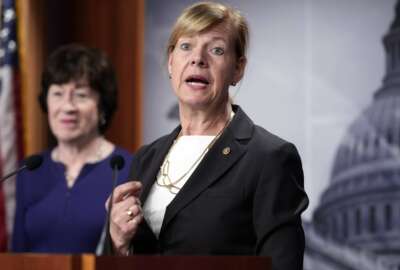By Suzanne Kubota
Senior Internet Editor
FederalNewsRadio.com
Consider: you’re walking along, thinking about the things you think about. The toe of your shoe catches on something and you trip a little. Just a little stagger. What you do next is what we all do. It’s human nature. You look back to see what you tripped on.
It’s in that spirit that Federal News Radio, as part of our series HReinvented, asked Ruby Butler DeMesme, former Assistant Secretary of the Air Force, where the NSPS, National Security Personnel System, tripped up on the way to being the pay for performance system for Defense and possibly all of federal government.
DeMesme explained there wasn’t just one problem. Start with the beginning. The NSPS, said DeMesme, was “crafted very fast.”
It was a top-down driven system that did not have buy-in and trust and understanding for those who were effected. It created a dual system for those who were already present and those who were hired into the new NSPS system, in terms of competing for pay. And there was a difficult bureaucratic process in place trying to link, and pay out, in the performance of an employee without fully understanding how the culture was going to be used to craft that.
Add to that, said DeMesme, “the lack of buy-in from the unions and not understanding how it was going to impact people already employed.”
As a result, in her estimation, “the system became convoluted and there was a lot of distrust by those who were effected by the system who did not feel that their supervisors were trained adequately to actually execute a performance based system.”
Going forward, in order to get it right next time, DeMesme said “the three things to develop first off would be
- employee buy-in to develop some trust and rapport with those who will be impacted by it,
- adequate training for those who will be executing the system and in understanding for those who are effected by the system, and
- getting some involvement from the unions up front.”
If they do those things, said DeMesme, there are many things about the NSPS that can be combined wiht the GS as they “move the old GS system into the future.”
As for the “very serious” consideration being given to putting federal employees into three basic categories, DeMesme was all for it.
I think it’s a good beginning because if you’re going to group employees, then you can start to develop a performance based environment around the folks who are just entering the system, those who are mid-career and those who are seniors and leaders. Leadership is a big part of how you work in the government.
No matter what system is used, said DeMesme, it “must have a good management strategy in place.”
Ruby Butler DeMesme is now Director of Human Capital Innovative Market Strategy for Deloitte.
For more of our series looking at changes to federal HR processes, HReinvented, click here.
Copyright
© 2024 Federal News Network. All rights reserved. This website is not intended for users located within the European Economic Area.




